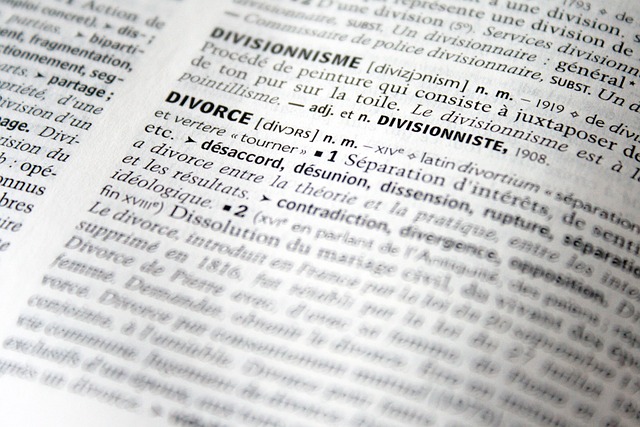Environmental lawsuits demand a deep understanding of intricate compliance laws, covering pollution control and land use regulations. Both plaintiffs and defendants need strategic navigation through common litigation types to hold accountable those violating environmental standards via administrative actions or jury trials. Businesses aiming to avoid legal issues and costly litigation should take proactive measures such as staying informed about legislative changes, implementing robust internal controls, conducting regular audits, fostering a culture of compliance, engaging experienced environmental law specialists, and early identification/remediation of compliance issues. High-profile cases highlight the intricacies and enforcement capabilities of Understanding Complex Environmental Compliance Laws, with significant penalties and forced changes in practices for non-compliant entities.
“Unraveling Environmental Lawsuits: A Comprehensive Guide to Common Litigation Types delves into the intricate world of environmental law, focusing on understanding complex environmental compliance laws. This article explores two key aspects: navigating regulatory compliance disputes and their real-world implications through case studies. By examining these litigation types, businesses can gain strategic insights for managing risks associated with environmental regulations, ensuring compliance, and mitigating potential legal challenges.”
- Unraveling Environmental Lawsuits: A Closer Look at Common Litigation Types
- Navigating Regulatory Compliance Disputes: Strategies for Businesses
- Case Studies: Real-World Examples of Environmental Legal Battles and Their Impact
Unraveling Environmental Lawsuits: A Closer Look at Common Litigation Types

Environmental lawsuits, a complex web of legal issues, often involve understanding intricate compliance laws. These cases delve into various aspects, from pollution control to land use regulations, requiring careful navigation by both plaintiffs and defendants. By exploring common litigation types, one gains insight into the strategic approaches and potential outcomes.
For his clients, these cases can be pivotal in holding accountable those who violate environmental standards. Whether through administrative actions or jury trials, the goal is to ensure respect for ecological norms. The intricate nature of these disputes demands a nuanced understanding of regulations, potential liabilities, and the best course of action for respective businesses operating within this landscape.
Navigating Regulatory Compliance Disputes: Strategies for Businesses

Navigating Regulatory Compliance Disputes: Strategies for Businesses
Understanding complex environmental compliance laws is a critical aspect of doing business in today’s regulated world. Businesses must be adept at interpreting and adhering to these stringent regulations to avoid legal pitfalls, such as indictments and costly litigation. A strategic approach to regulatory compliance involves proactive measures like staying informed about changes in legislation, implementing robust internal controls, and conducting regular audits. By fostering a culture of compliance within the organization, businesses can significantly reduce the risk of non-compliance.
For businesses facing regulatory challenges, developing a comprehensive legal strategy is essential. This includes engaging experienced counsel who specialize in environmental law and have a proven track record of winning challenging defense verdicts across the country. Additionally, early identification and remediation of compliance issues can help mitigate potential liabilities and avoid costly legal battles. Businesses should also consider implementing effective communication channels to ensure that all stakeholders are aware of their responsibilities regarding regulatory compliance.
Case Studies: Real-World Examples of Environmental Legal Battles and Their Impact

In recent years, environmental legal battles have provided compelling case studies illustrating the intricacies of complex environmental compliance laws. One notable example involves a multi-national corporation accused of improper disposal of hazardous waste products across various states. This high-profile case not only underscored the reach and enforcement capabilities of environmental regulations but also highlighted the significant penalties awaiting businesses that fail to adhere to stringent standards. The corporate defendant, facing lawsuits from both federal agencies and respective state authorities, was ultimately forced to implement sweeping changes in its waste management practices and pay substantial fines.
Another compelling case study centers on a group of individual clients who sued a local manufacturing plant over air pollution levels in their community. This grassroots movement resulted in a comprehensive settlement that required the plant to install advanced emission control technologies and compensate nearby residents for health-related issues. These real-world examples not only demonstrate the power of environmental law but also serve as a stark reminder of the potential consequences for businesses and individuals alike who fail to navigate the complex landscape of understanding complex environmental compliance laws.
Environmental lawsuits and regulatory compliance disputes are complex landscapes, demanding a deep understanding of intricate regulations. By exploring common litigation types, learning strategic navigation techniques for businesses, and studying real-world case studies, organizations can better prepare for—and navigate—these challenges. Unraveling the complexities of environmental laws is not just about staying compliant; it’s about ensuring long-term sustainability and mitigating potential legal impacts. Through informed strategies and a closer look at these cases, businesses can become champions of environmental responsibility.






